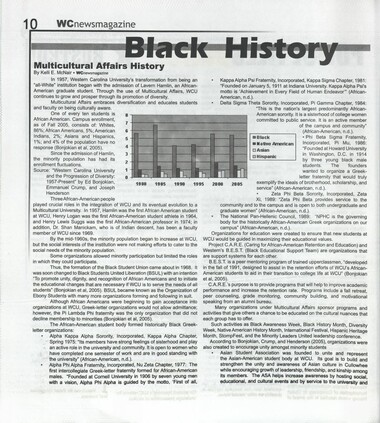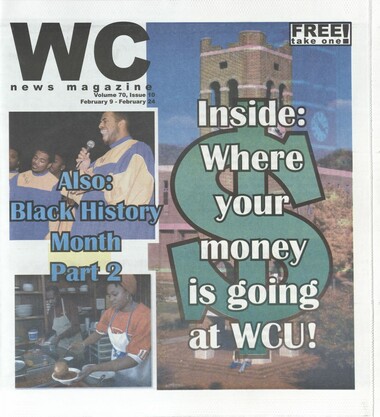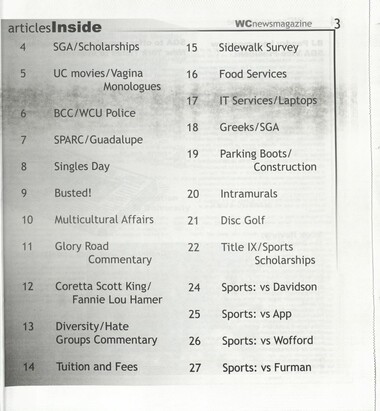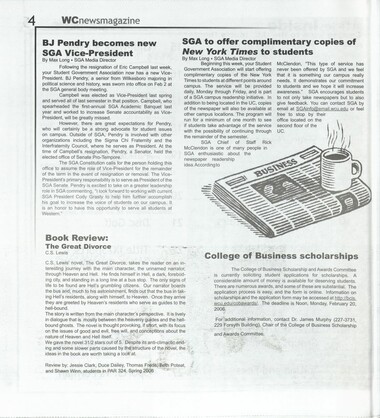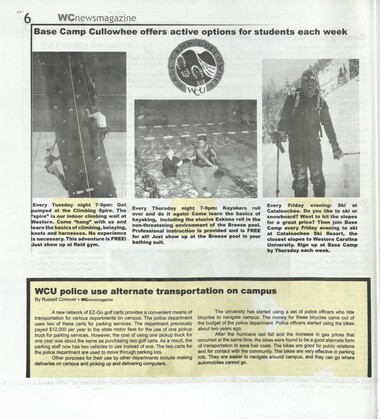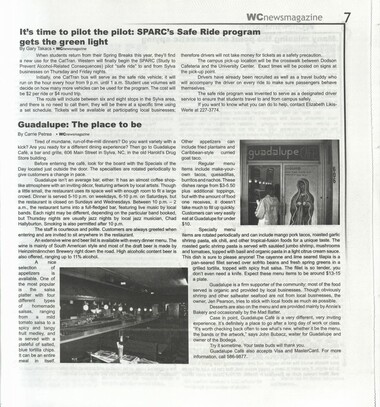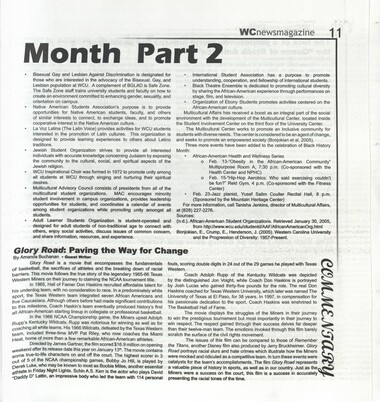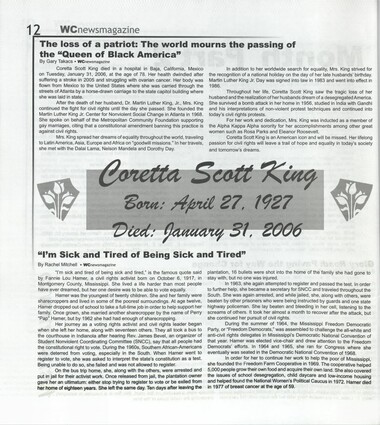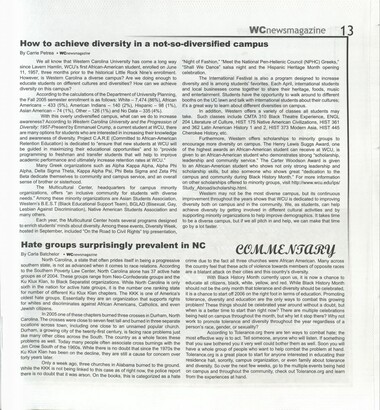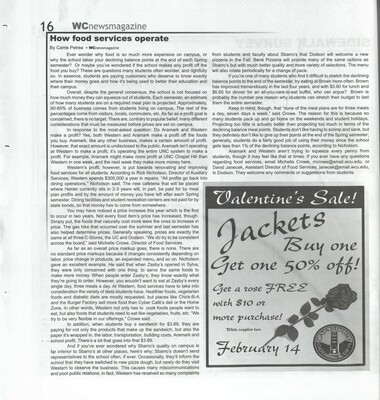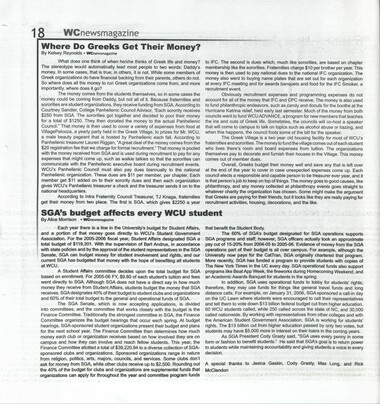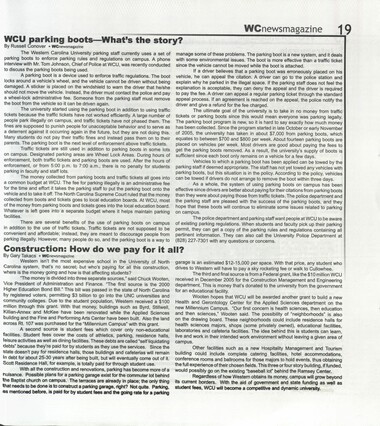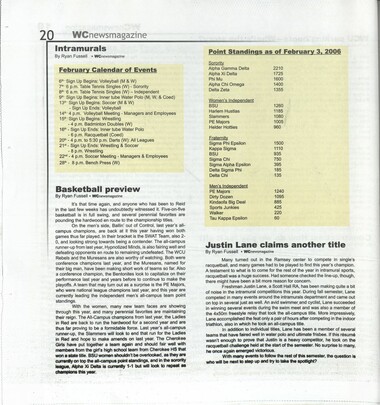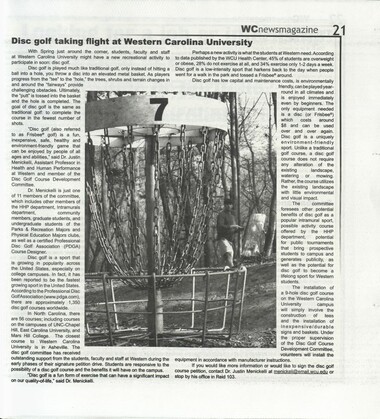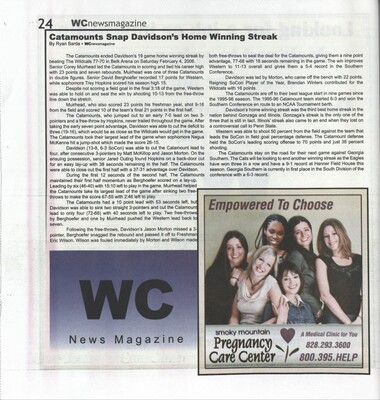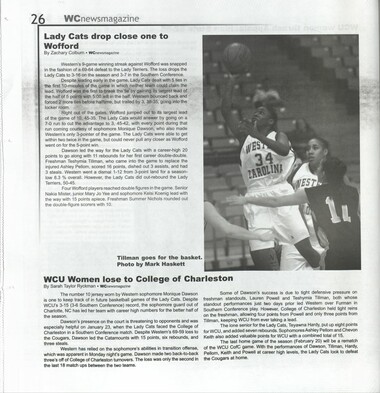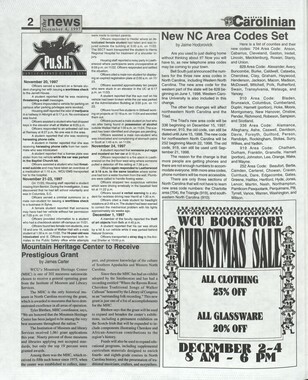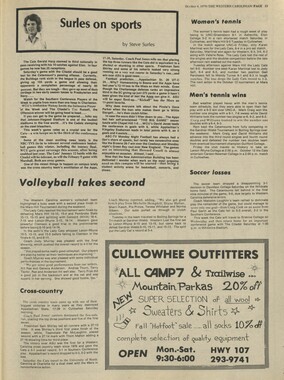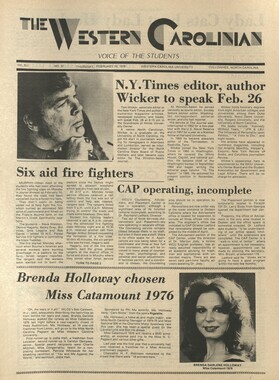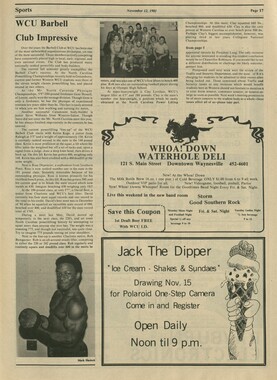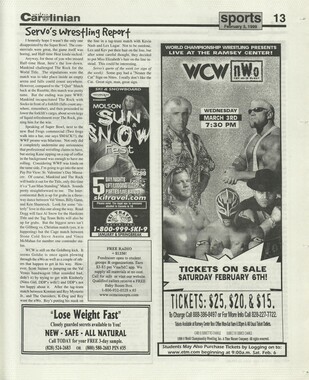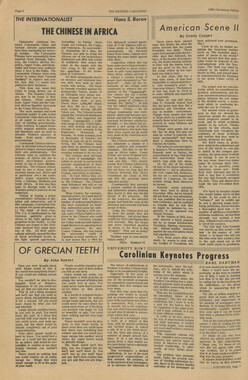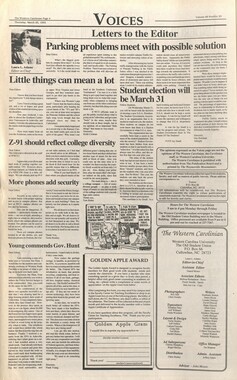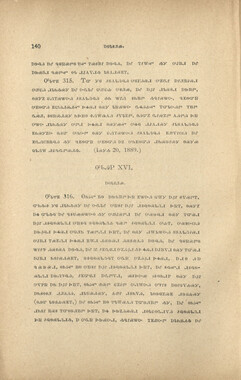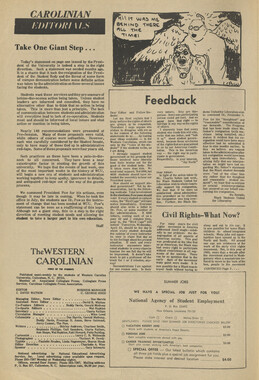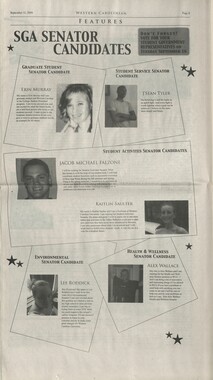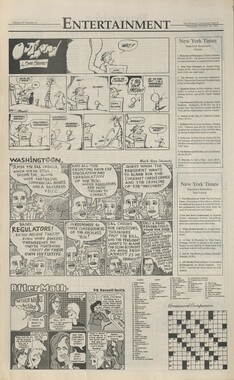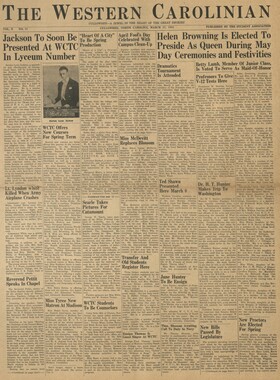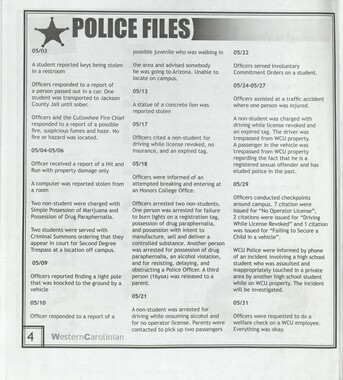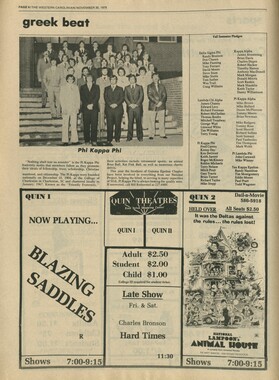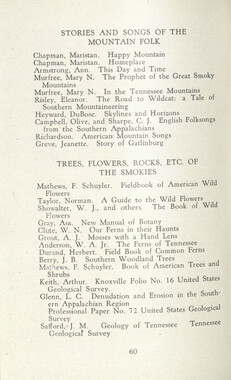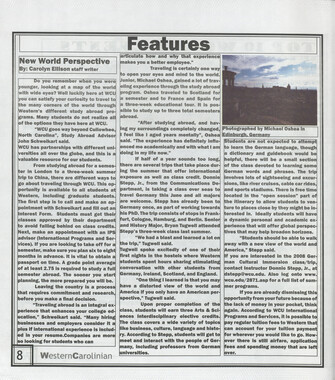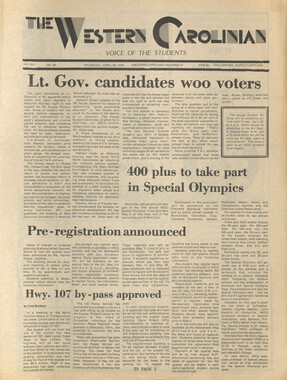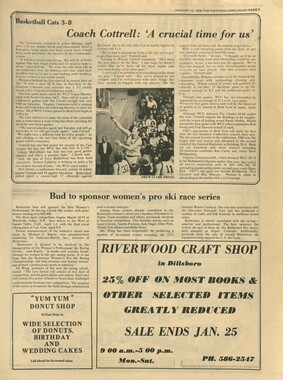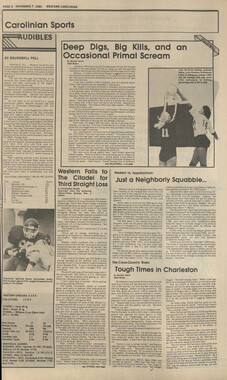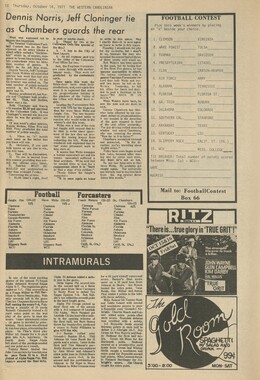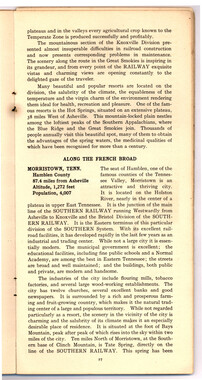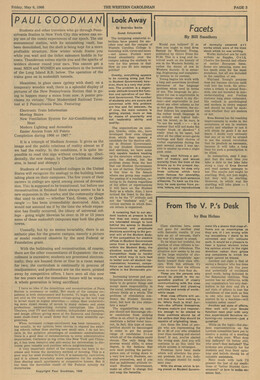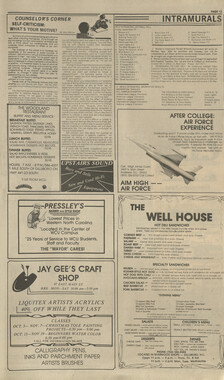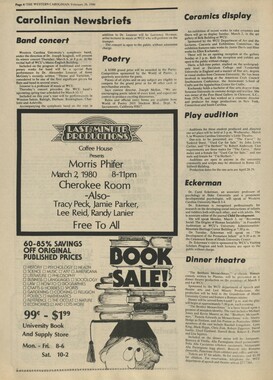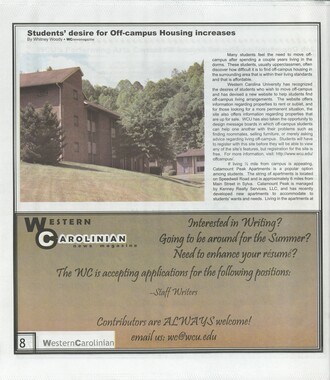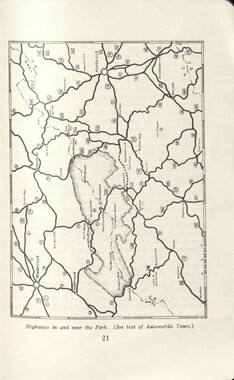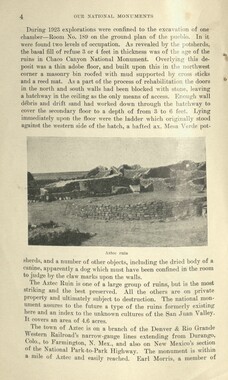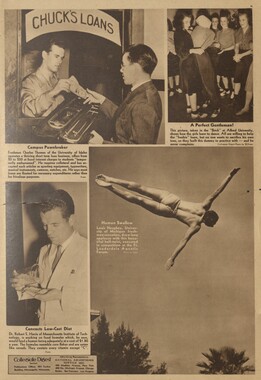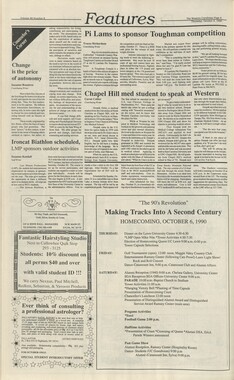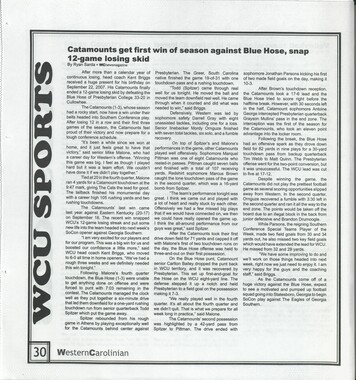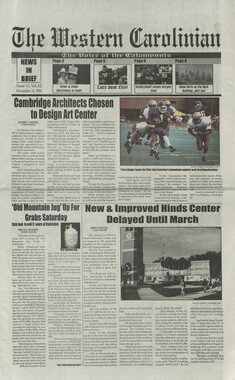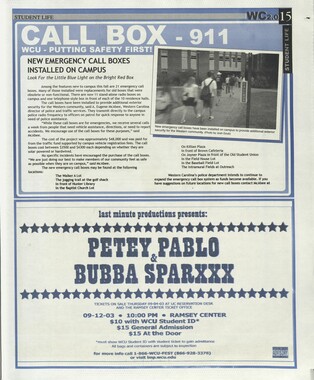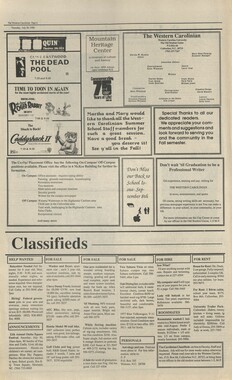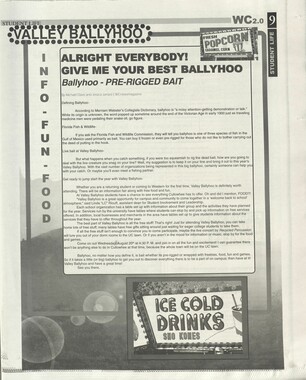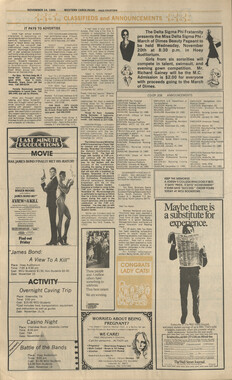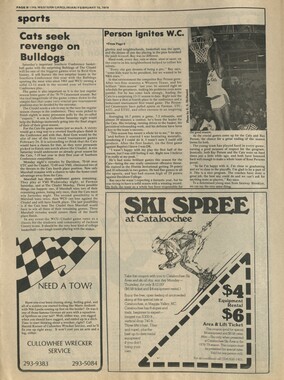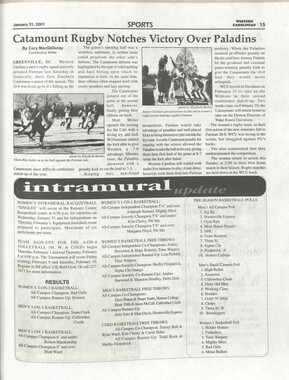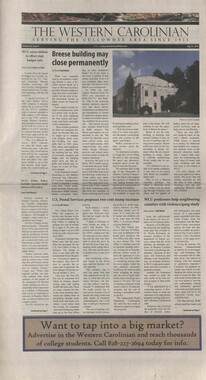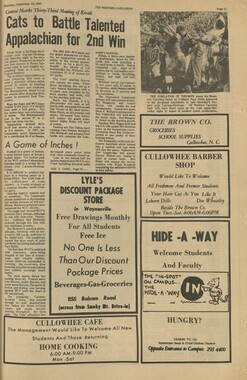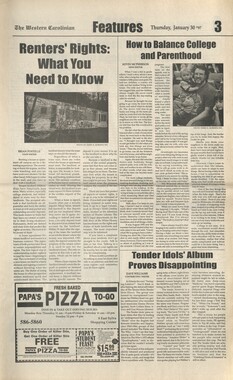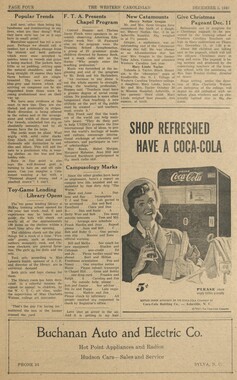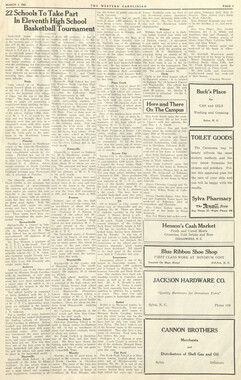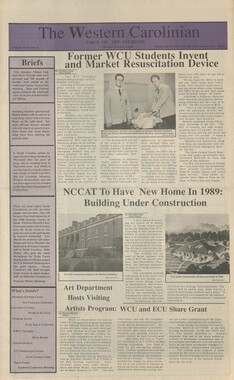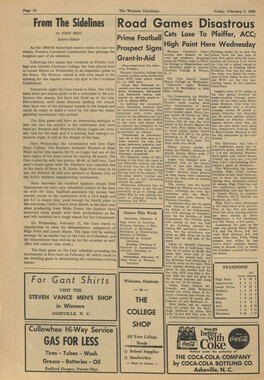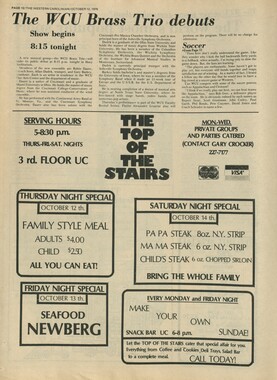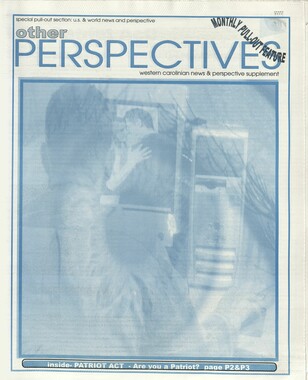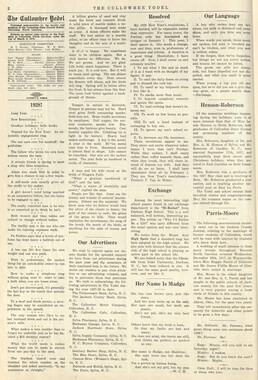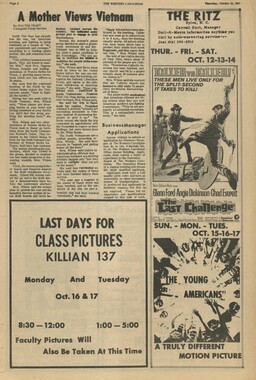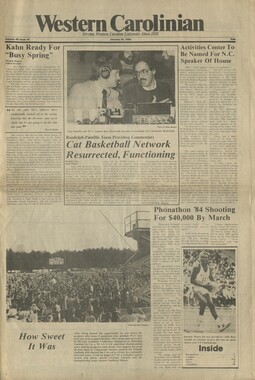Western Carolina University (21)
View all
- Canton Champion Fibre Company (2308)
- Cherokee Traditions (291)
- Civil War in Southern Appalachia (165)
- Craft Revival (1942)
- George Masa Collection (137)
- Great Smoky Mountains - A Park for America (2900)
- Highlights from Western Carolina University (422)
- Horace Kephart (973)
- Journeys Through Jackson (159)
- LGBTQIA+ Archive of Jackson County (85)
- Oral Histories of Western North Carolina (316)
- Picturing Appalachia (6797)
- Stories of Mountain Folk (413)
- Travel Western North Carolina (153)
- Western Carolina University Fine Art Museum Vitreograph Collection (129)
- Western Carolina University Herbarium (92)
- Western Carolina University: Making Memories (738)
- Western Carolina University Publications (2491)
- Western Carolina University Restricted Electronic Theses and Dissertations (146)
- Western North Carolina Regional Maps (71)
- World War II in Southern Appalachia (131)
University of North Carolina Asheville (6)
View all
- Allanstand Cottage Industries (62)
- Appalachian National Park Association (53)
- Bennett, Kelly, 1890-1974 (1463)
- Berry, Walter (76)
- Brasstown Carvers (40)
- Carver, George Washington, 1864?-1943 (26)
- Cathey, Joseph, 1803-1874 (1)
- Champion Fibre Company (233)
- Champion Paper and Fibre Company (297)
- Cherokee Indian Fair Association (16)
- Cherokee Language Program (22)
- Crowe, Amanda (40)
- Edmonston, Thomas Benton, 1842-1907 (7)
- Ensley, A. L. (Abraham Lincoln), 1865-1948 (275)
- Fromer, Irving Rhodes, 1913-1994 (70)
- George Butz (BFS 1907) (46)
- Goodrich, Frances Louisa (120)
- Grant, George Alexander, 1891-1964 (96)
- Heard, Marian Gladys (60)
- Kephart, Calvin, 1883-1969 (15)
- Kephart, Horace, 1862-1931 (313)
- Kephart, Laura, 1862-1954 (67)
- Laney, Gideon Thomas, 1889-1976 (439)
- Masa, George, 1881-1933 (61)
- McElhinney, William Julian, 1896-1953 (44)
- Niggli, Josephina, 1910-1983 (10)
- North Carolina Park Commission (105)
- Osborne, Kezia Stradley (9)
- Owens, Samuel Robert, 1918-1995 (11)
- Penland Weavers and Potters (36)
- Roberts, Vivienne (15)
- Roth, Albert, 1890-1974 (142)
- Schenck, Carl Alwin, 1868-1955 (1)
- Sherrill's Photography Studio (2565)
- Southern Highland Handicraft Guild (127)
- Southern Highlanders, Inc. (71)
- Stalcup, Jesse Bryson (46)
- Stearns, I. K. (213)
- Thompson, James Edward, 1880-1976 (226)
- United States. Indian Arts and Crafts Board (130)
- USFS (683)
- Vance, Zebulon Baird, 1830-1894 (1)
- Weaver, Zebulon, 1872-1948 (58)
- Western Carolina College (230)
- Western Carolina Teachers College (282)
- Western Carolina University (2008)
- Western Carolina University. Mountain Heritage Center (18)
- Whitman, Walt, 1819-1892 (10)
- Wilburn, Hiram Coleman, 1880-1967 (73)
- Williams, Isadora (3)
- Cain, Doreyl Ammons (0)
- Crittenden, Lorraine (0)
- Rhodes, Judy (0)
- Smith, Edward Clark (0)
- Appalachian Region, Southern (2940)
- Asheville (N.C.) (1944)
- Avery County (N.C.) (26)
- Blount County (Tenn.) (195)
- Buncombe County (N.C.) (1680)
- Cherokee County (N.C.) (283)
- Clay County (N.C.) (556)
- Graham County (N.C.) (238)
- Great Smoky Mountains National Park (N.C. and Tenn.) (525)
- Haywood County (N.C.) (3573)
- Henderson County (N.C.) (70)
- Jackson County (N.C.) (4919)
- Knox County (Tenn.) (35)
- Knoxville (Tenn.) (13)
- Lake Santeetlah (N.C.) (10)
- Macon County (N.C.) (421)
- Madison County (N.C.) (216)
- McDowell County (N.C.) (39)
- Mitchell County (N.C.) (135)
- Polk County (N.C.) (35)
- Qualla Boundary (982)
- Rutherford County (N.C.) (78)
- Swain County (N.C.) (2185)
- Transylvania County (N.C.) (270)
- Watauga County (N.C.) (12)
- Waynesville (N.C.) (86)
- Yancey County (N.C.) (72)
- Aerial Photographs (3)
- Aerial Views (60)
- Albums (books) (4)
- Articles (1)
- Artifacts (object Genre) (228)
- Bibliographies (1)
- Biography (general Genre) (2)
- Cards (information Artifacts) (38)
- Clippings (information Artifacts) (192)
- Copybooks (instructional Materials) (3)
- Crafts (art Genres) (622)
- Depictions (visual Works) (21)
- Design Drawings (1)
- Digital Moving Image Formats (2)
- Drawings (visual Works) (185)
- Envelopes (101)
- Exhibitions (events) (1)
- Facsimiles (reproductions) (1)
- Fiction (general Genre) (4)
- Financial Records (12)
- Fliers (printed Matter) (67)
- Glass Plate Negatives (381)
- Guidebooks (2)
- Internegatives (10)
- Interviews (817)
- Land Surveys (102)
- Letters (correspondence) (1045)
- Manuscripts (documents) (618)
- Maps (documents) (177)
- Memorandums (25)
- Minutes (administrative Records) (59)
- Negatives (photographs) (6090)
- Newsletters (1290)
- Newspapers (2)
- Notebooks (8)
- Occupation Currency (1)
- Paintings (visual Works) (1)
- Pen And Ink Drawings (1)
- Periodicals (193)
- Personal Narratives (10)
- Photographs (12976)
- Plans (maps) (1)
- Poetry (6)
- Portraits (4568)
- Postcards (329)
- Programs (documents) (181)
- Publications (documents) (2444)
- Questionnaires (65)
- Relief Prints (26)
- Sayings (literary Genre) (1)
- Scrapbooks (282)
- Sheet Music (2)
- Slides (photographs) (402)
- Songs (musical Compositions) (2)
- Sound Recordings (796)
- Specimens (92)
- Speeches (documents) (18)
- Tintypes (photographs) (8)
- Transcripts (324)
- Text Messages (0)
- A.L. Ensley Collection (275)
- Appalachian Industrial School Records (7)
- Appalachian National Park Association Records (336)
- Axley-Meroney Collection (2)
- Bayard Wootten Photograph Collection (20)
- Bethel Rural Community Organization Collection (7)
- Blumer Collection (5)
- C.W. Slagle Collection (20)
- Canton Area Historical Museum (2110)
- Carlos C. Campbell Collection (462)
- Cataloochee History Project (64)
- Cherokee Studies Collection (4)
- Daisy Dame Photograph Album (5)
- Daniel Boone VI Collection (1)
- Doris Ulmann Photograph Collection (112)
- Elizabeth H. Lasley Collection (1)
- Elizabeth Woolworth Szold Fleharty Collection (4)
- Frank Fry Collection (95)
- George Masa Collection (173)
- Gideon Laney Collection (452)
- Hazel Scarborough Collection (2)
- Hiram C. Wilburn Papers (28)
- Historic Photographs Collection (236)
- Horace Kephart Collection (861)
- Humbard Collection (33)
- Hunter and Weaver Families Collection (1)
- I. D. Blumenthal Collection (4)
- Isadora Williams Collection (4)
- Jesse Bryson Stalcup Collection (47)
- Jim Thompson Collection (224)
- John B. Battle Collection (7)
- John C. Campbell Folk School Records (80)
- John Parris Collection (6)
- Judaculla Rock project (2)
- Kelly Bennett Collection (1482)
- Love Family Papers (11)
- Major Wiley Parris Civil War Letters (3)
- Map Collection (12)
- McFee-Misemer Civil War Letters (34)
- Mountain Heritage Center Collection (4)
- Norburn - Robertson - Thomson Families Collection (44)
- Pauline Hood Collection (7)
- Pre-Guild Collection (2)
- Qualla Arts and Crafts Mutual Collection (12)
- R.A. Romanes Collection (681)
- Rosser H. Taylor Collection (1)
- Samuel Robert Owens Collection (94)
- Sara Madison Collection (144)
- Sherrill Studio Photo Collection (2558)
- Smoky Mountains Hiking Club Collection (616)
- Stories of Mountain Folk - Radio Programs (374)
- The Reporter, Western Carolina University (510)
- Venoy and Elizabeth Reed Collection (16)
- WCU Gender and Sexuality Oral History Project (32)
- WCU Mountain Heritage Center Oral Histories (25)
- WCU Oral History Collection - Mountain People, Mountain Lives (71)
- WCU Students Newspapers Collection (1923)
- Western North Carolina Tomorrow Black Oral History Project (69)
- William Williams Stringfield Collection (2)
- Zebulon Weaver Collection (109)
- African Americans (390)
- Appalachian Trail (35)
- Artisans (521)
- Cherokee art (84)
- Cherokee artists -- North Carolina (10)
- Cherokee language (21)
- Cherokee pottery (101)
- Cherokee women (208)
- Church buildings (190)
- Civilian Conservation Corps (U.S.) (111)
- College student newspapers and periodicals (2012)
- Dams (108)
- Dance (1023)
- Education (222)
- Floods (63)
- Folk music (1015)
- Forced removal, 1813-1903 (2)
- Forest conservation (220)
- Forests and forestry (1197)
- Gender nonconformity (4)
- Great Smoky Mountains National Park (N.C. and Tenn.) (181)
- Hunting (46)
- Landscape photography (25)
- Logging (119)
- Maps (83)
- Mines and mineral resources (9)
- North Carolina -- Maps (18)
- Paper industry (38)
- Postcards (255)
- Pottery (135)
- Railroad trains (72)
- Rural electrification -- North Carolina, Western (3)
- School integration -- Southern States (2)
- Segregation -- North Carolina, Western (5)
- Slavery (5)
- Sports (452)
- Storytelling (243)
- Waterfalls -- Great Smoky Mountains (N.C. and Tenn.) (66)
- Weaving -- Appalachian Region, Southern (280)
- Wood-carving -- Appalachian Region, Southern (328)
- World War, 1939-1945 (173)
Western Carolinian Volume 70 Number 10
Item
Item’s are ‘child’ level descriptions to ‘parent’ objects, (e.g. one page of a whole book).
-
-
10 | WCnewsmagazine Multicultural Affairs History By Kelli E. McNair WGnewsmagazine In 1957, Western Carolina Universitys transformation from being an all-White institution began with the admission of Lavern Hamlin, an African American graduate student. Through the use of Multicultural Affairs, WCU Continues to grow and prosper through its promotion of diversity Multicultural Affairs embraces diversification and educates students and faculty on being culturally aware. One of every ten students is African American. Campus enrollment, as of Fall 2005, consists of: Whites, 86%; African Americans, 5%; American Indians, 2%; Asians and Hispanics, 1%; and 4% of the population have no response (Bonjokian et al, 2005), Since the admission of Hamlin, the minority population has had. its enrolment fluctuations, Source: Westem Carolina University and the Progression of Diversity: 1957-Present" by Ed Bonjokian, Emmanuel Crump, and Joseph Henderson Three African-American people played crucial roles in the integration of WCU and its eventual evolution to a Multicultural University. In 1957, Hamlin was the first African American student at WCU, Henry Logan was the first African-American student athlete in 1964, and Henry Lewis Suggs was the first African-American professor in 1974; in addition, Dr. Shan Manickam, who is of Indian descent, has been a faculty | member of WCU since 1969. | By the mid-1960s, the minority population began to increase at WCU, but the social interests of the institution were not making efforts to cater to the social needs of the minority population. Some organizations allowed minority participation but limited the roles in which they could participate. Thus, the formation of the Black Student Union came about in 1968. It was soon changed to Black Students United Liberation (BSUL) with an intention To promote unity, dignity, and recognition of African Americans and to initiate the educational changes that are necessary if WCU is to serve the needs of all students (Bonjokian et al, 2005). BSUL became known as the Organization of Ebony Students with many more organizations forming and following in suit. Although African Americans were beginning to gain acceptance into organizations at WCU, Greek-letter organizations would not allow admittance; however, the Pi Lambda Phi fratemity was the only organization that did not decline membership to minorities (Bonjokian et al, 2005). The African-American student body formed historically Black Greek- letter organizations: + Alpha Kappa Alpha Sorority, Incorporated, Kappa Alpha Chapter, Spring 1975: Its members have strong feelings of sisterhood and play an active role in the university and community. Itis open to women who have completed one semester of work and are in good standing with the university (African-American, n.d.). + Alpha Phi Alpha Fraternity, Incorporated, Nu Zeta Chapter, 1977: The first intercollegiate Greek-letter fraternity formed for African-American males. Founded at Comell University in 1906 by seven young men with @ vision, Alpha Phi Alpha is guided by the motto, First of all, 1980 1985 1990 1995 + Kappa Alpha Psi Fratemity, Incorporated, Kappa Sigma Chapter, 1981: Founded on January 5, 1911 at indiana University. Kappa Alpha Psi's motto is Achievement in Every Field of Human Endeavor (African- American, n.d.). + Delta Sigma Theta Sorority, Incorporated, Pi Gamma Chapter, 1984: This is the nations largest predominantly African- American sorority. Itis a sisterhood of college women committed to public service. It is an active member of the campus and community (African-American, n.d.). mBlack *Phi Beta Sigma Fraternity, lNative American | Incorporated, Pi Mu, 1986: GAsian Founded at Howard University Hispanic in Washington, D.C. in 1914 by three young black male students. The founders wanted to organize a Greek- letter fraternity that would truly exemplify the ideals of brotherhood, scholarship, and service (African-American, n.d.) + Zeta Phi Beta Sorority, Incorporated, Zeta Xi, 1989: "Zeta Phi Beta provides service to the community and to the campus and is open to both undergraduate and graduate women (Aftican-American, n.d.). + The National Pan-Hellenic Council, 1989: NPHC is the governing body for the historically African-American Greek organizations on our campus" (African-American, n.d.). Organizations for education were created to ensure that new students at WCU would be guided in maximizing their educational values. Project C.A.R.E. (Caring for African-American Retention and Education) and Westems B.E.S.T. (Black Educational Support Team) are organizations that are support systems for each other. B.E.S.T. is a peer mentoring program of trained upperclassmen, developed in the fall of 1991, designed to assist in the retention efforts of WCU's African- American students to aid in their transition to college life at WCU" (Bonjokian et al, 2005) C.A.R.E.'s purpose is to provide programs that will help to improve academic performance and increase the retention rate. Programs include a fall retreat, peer counseling, grade monitoring, community building, and motivational Speaking from an alumni bureau. Many organizations under Multicultural Affairs sponsor programs and activities that give others a chance to be educated on the cultural nuances that each group has to offer. Such activities as Black Awareness Week, Black History Month, Diversity Week, Native American History Month, international Festival, Hispanic Heritage Month, StompFest, and the Minority Leaders United leadership conference. According to Bonjokian, Crump, and Henderson (2005), organizations were also created to encourage unity amongst minority students + Asian Student Association was founded to unite and represent the Asian-American student body at WCU. Its goal is to build and strengthen the unity and awareness of Asian culture in Cullowhee while encouraging growth of leadership, friendship, and kinship among its members. The ASA helps increase awareness by hosting social, educational, and cultural events and by service to the university and
Object
Object’s are ‘parent’ level descriptions to ‘children’ items, (e.g. a book with pages).
-
The Western Carolinian is Western Carolina University's student-run newspaper. The paper was published as the Cullowhee Yodel from 1924 to 1931 before changing its name to The Western Carolinian in 1933.
-
